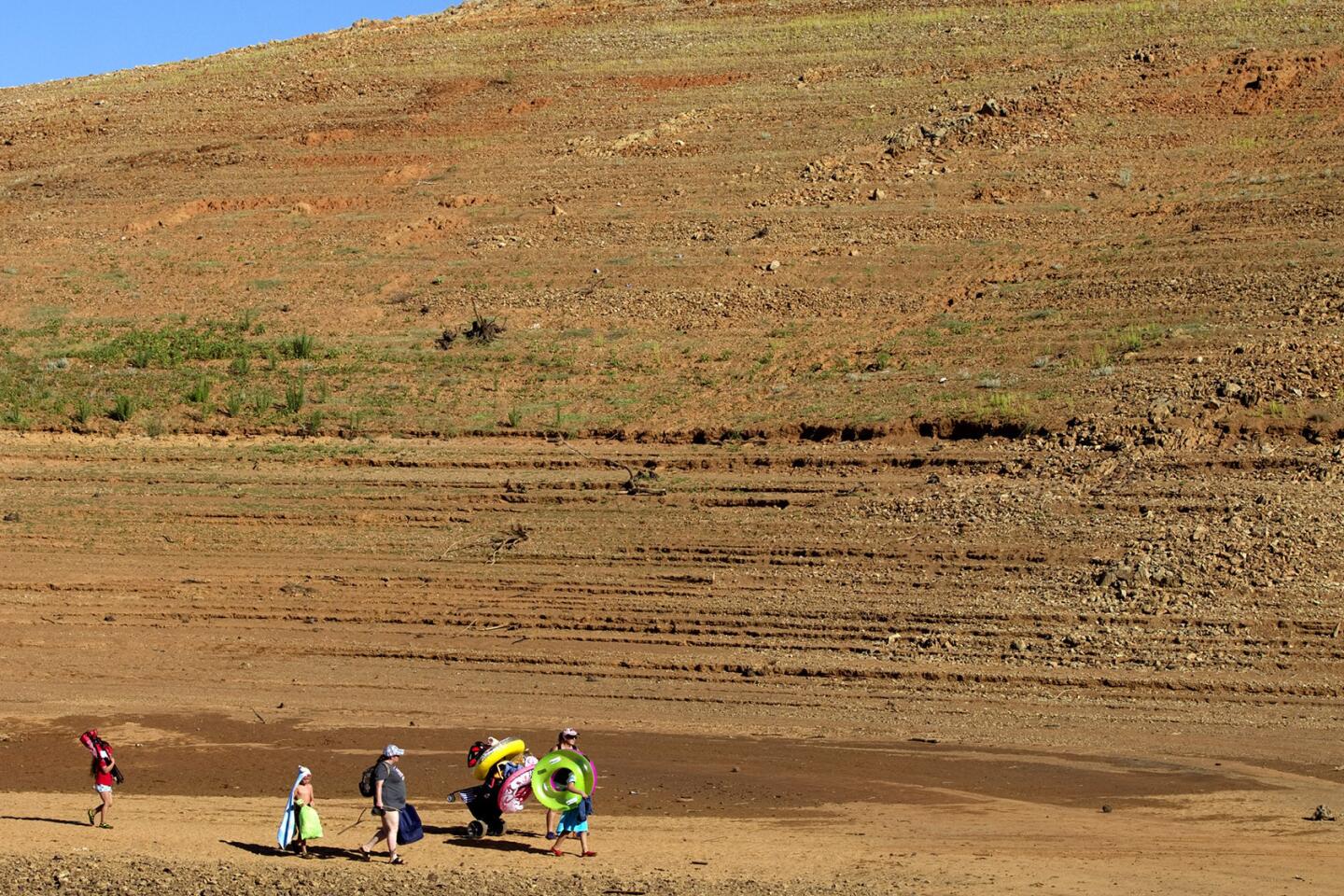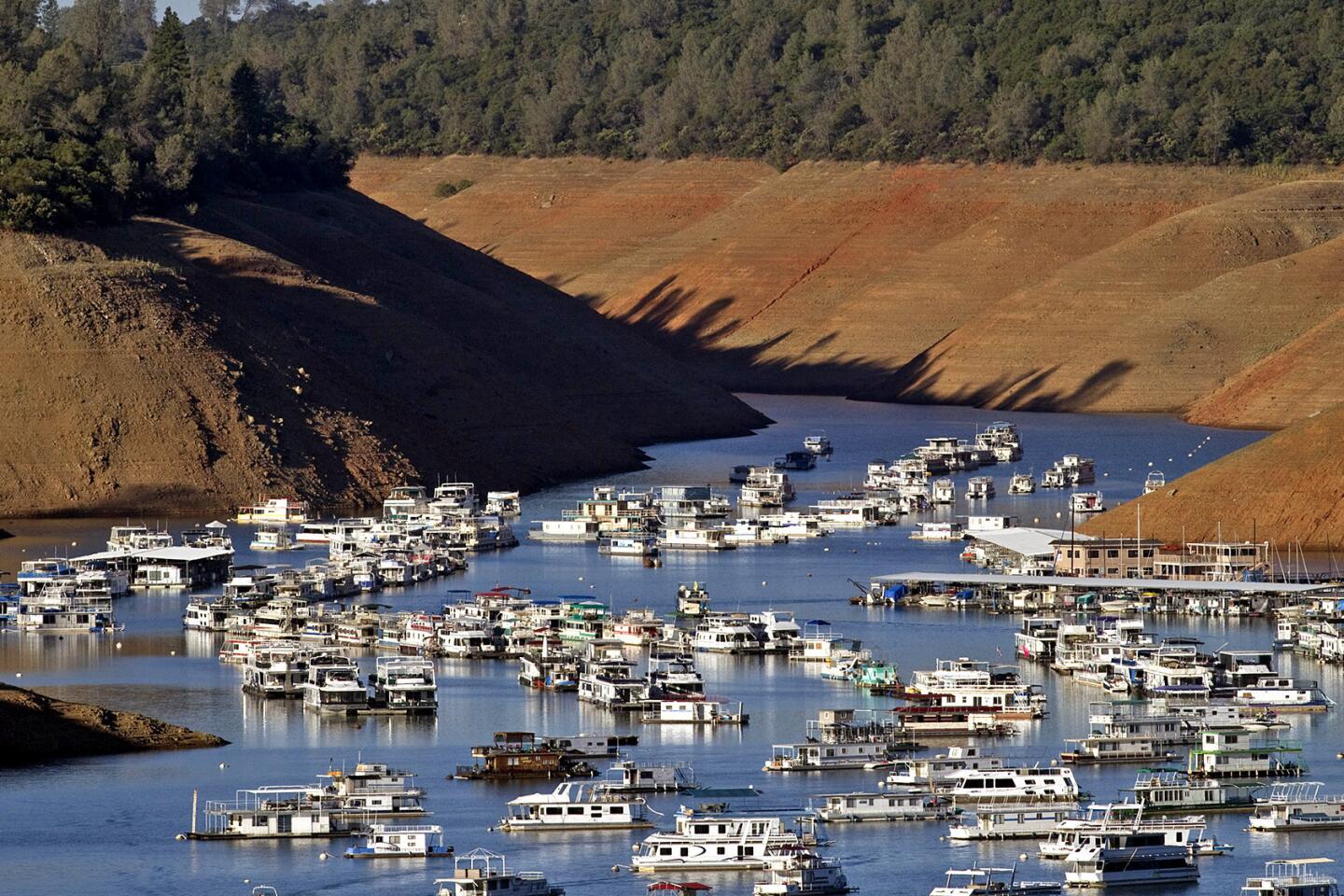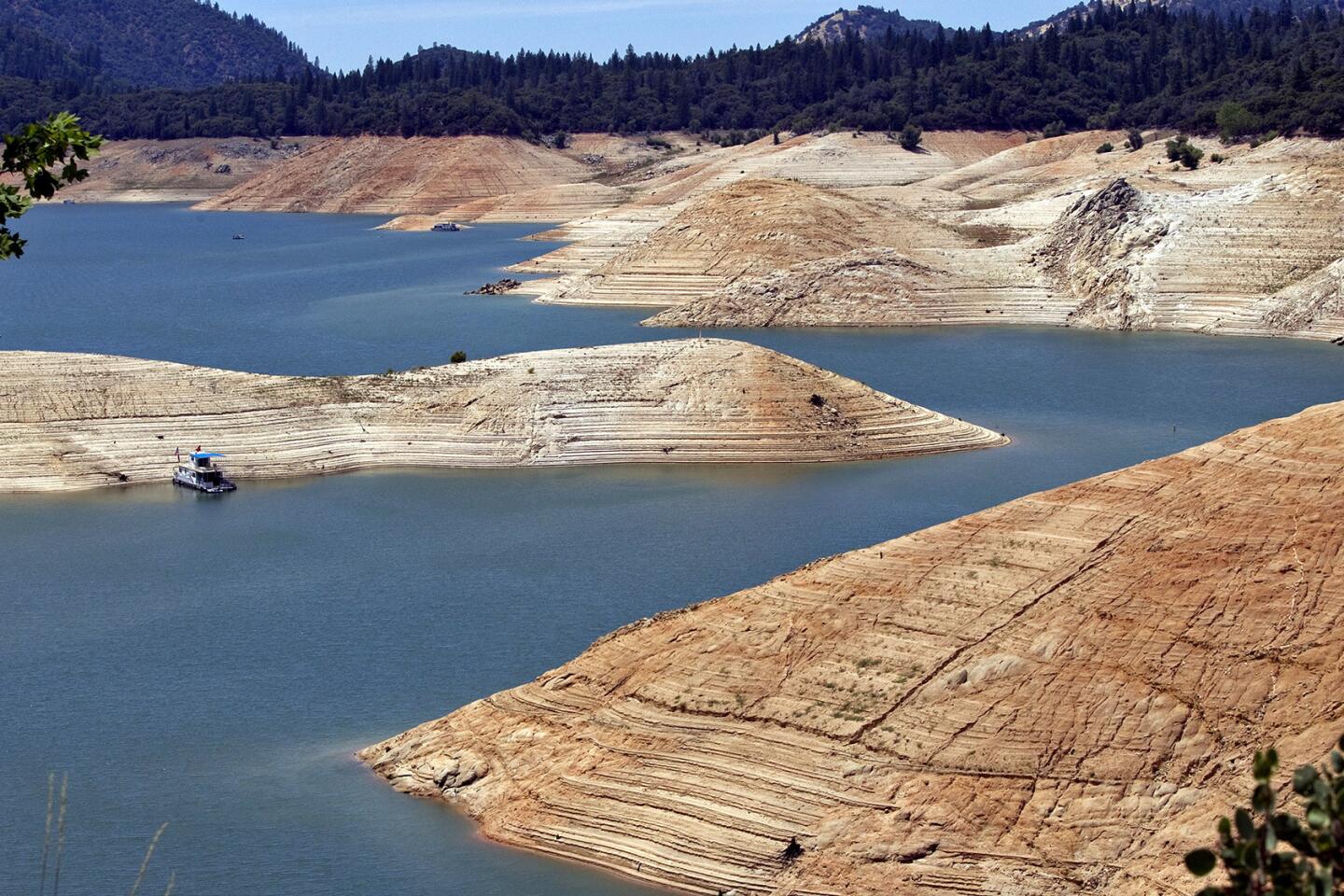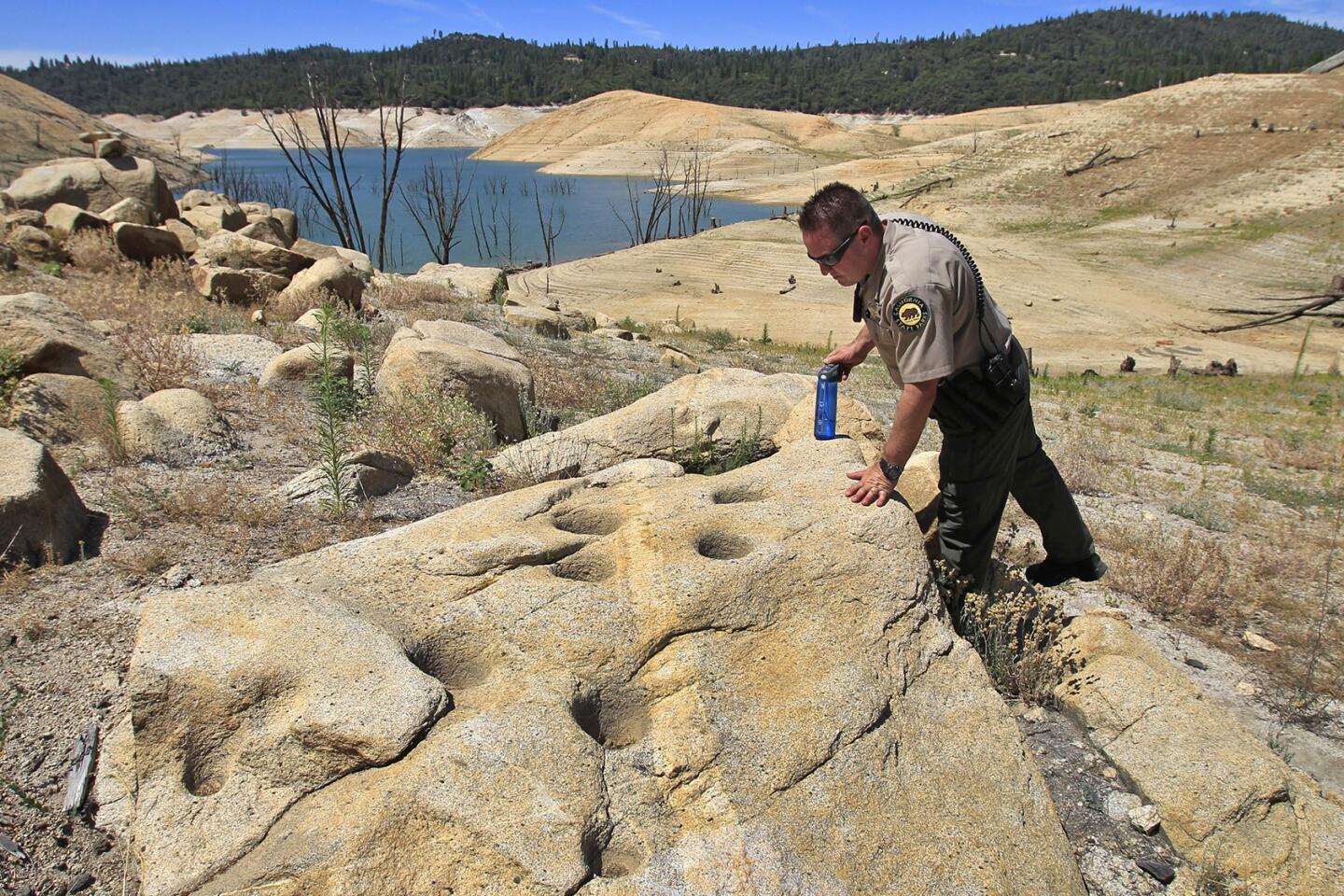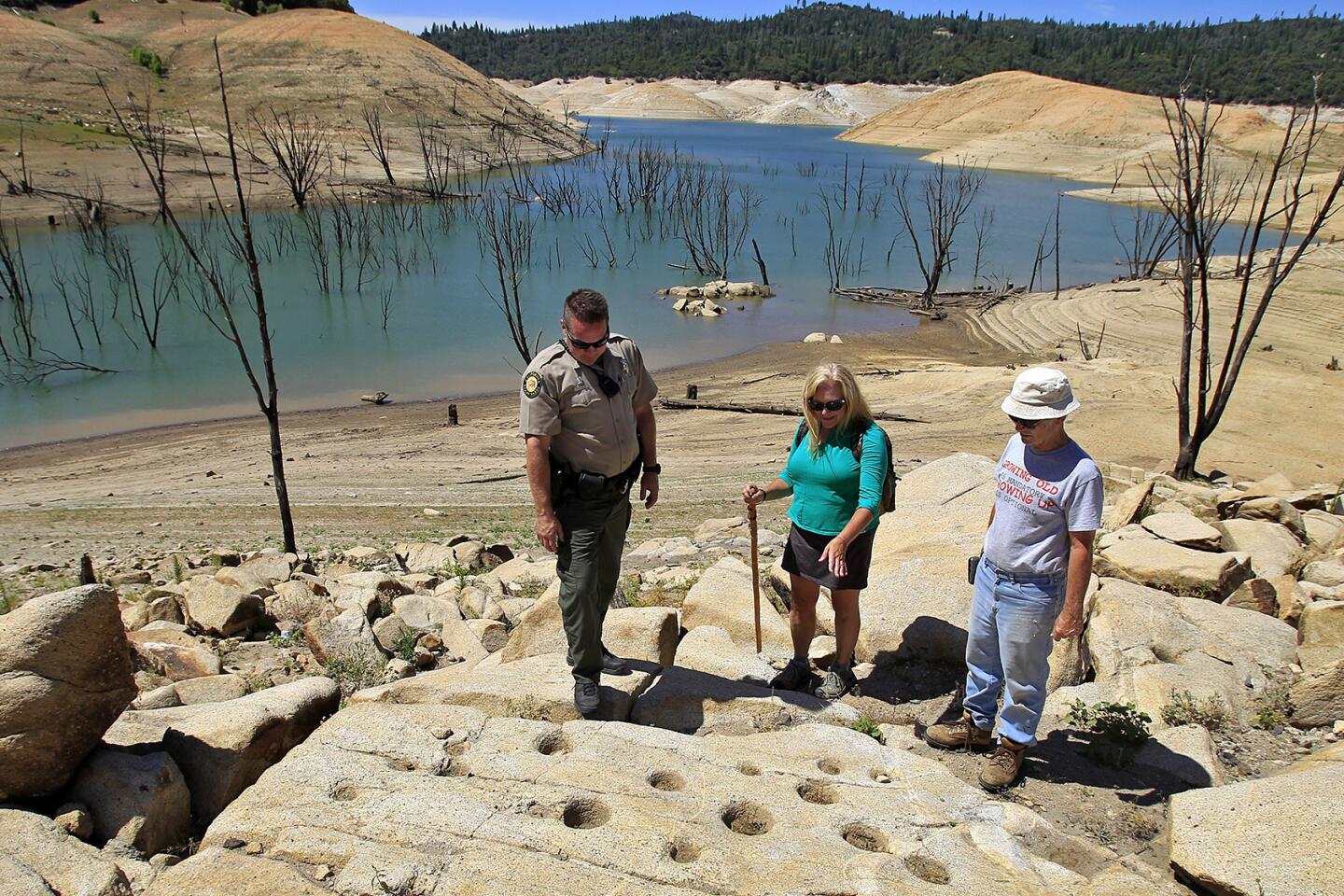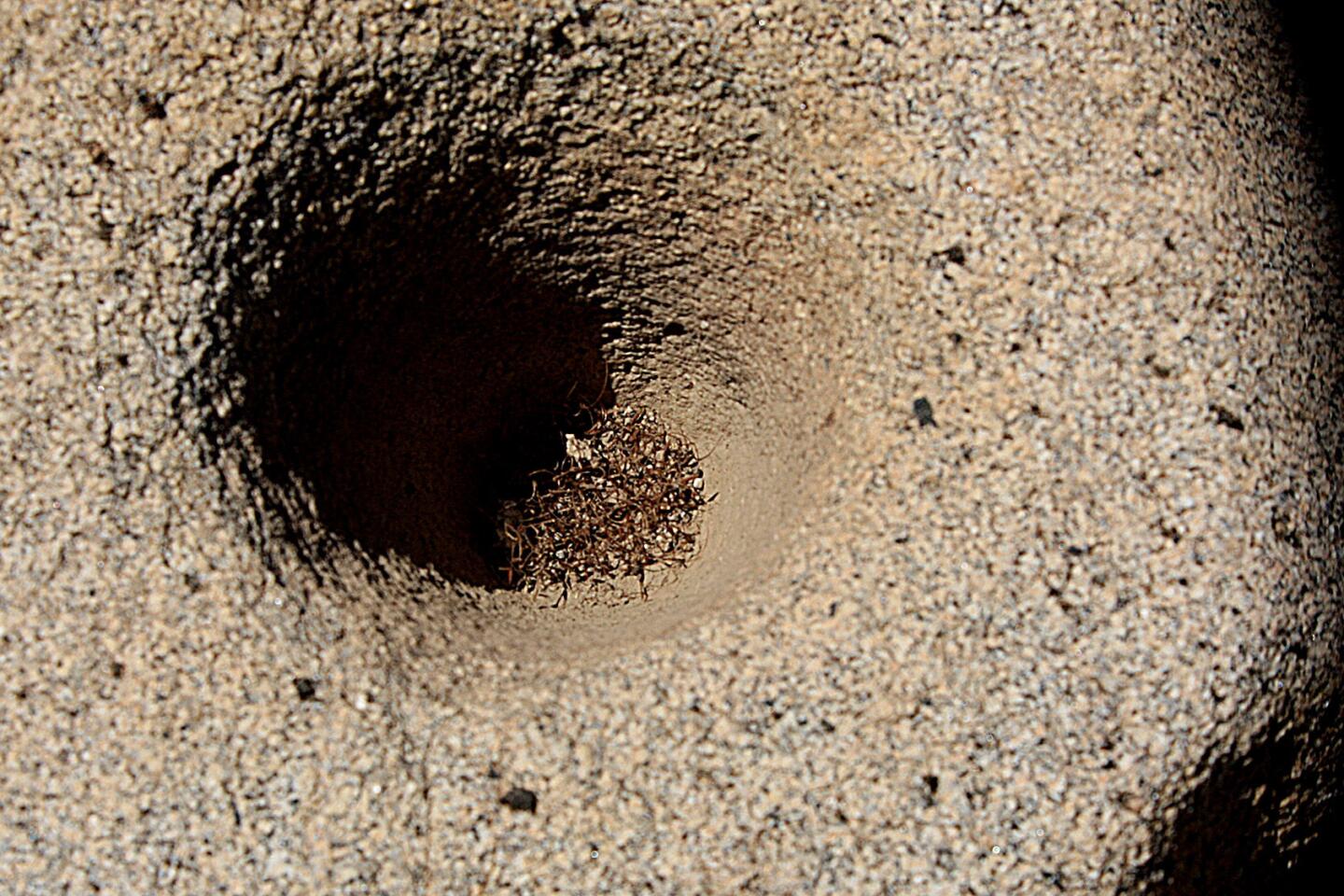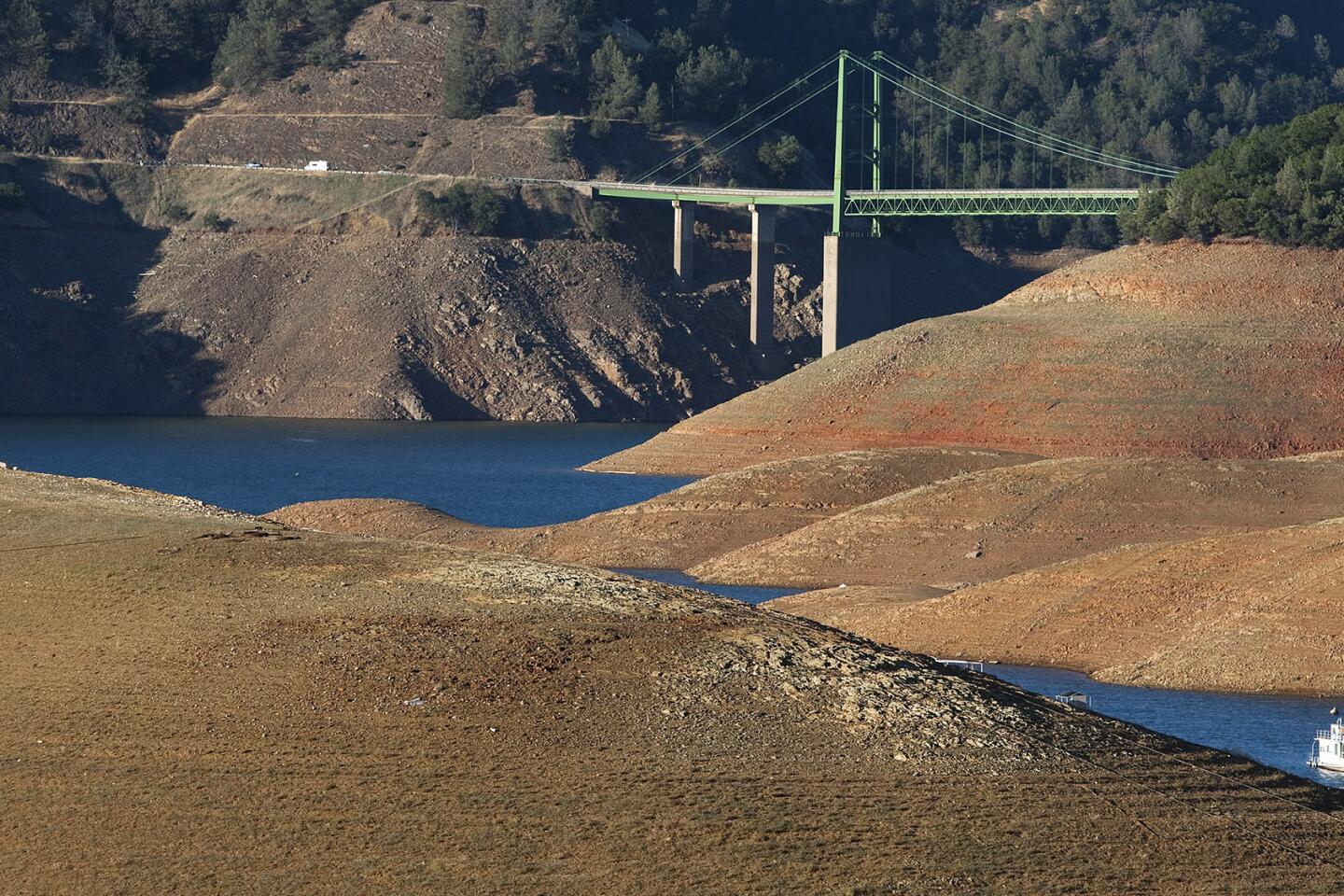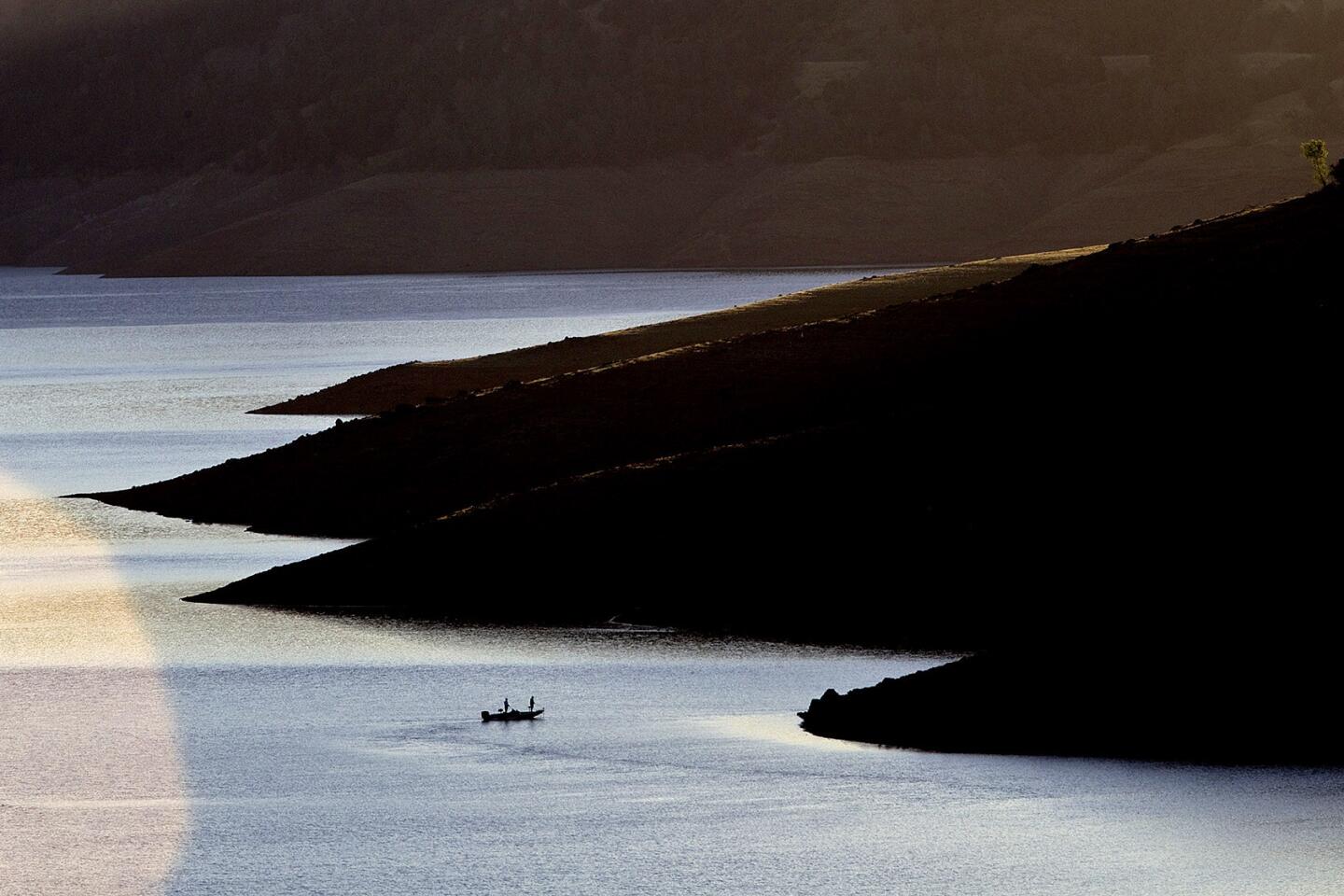Volunteers work to protect California historic site from looters
Reporting from Lake Oroville — Kim Preston lodged her walking stick against a steep slope of crumbled granite dotted with dusty lupine, and began her descent.
Her destination lay 160 feet below the high-water mark — a maze of bone-dry rock piles that miners had moved by hand to divert the Feather River in their search for gold.
Her task was to note any sign of vandalism or looting — holes in the ground made by metal detectors, piles of treasure amassed by visitors who may not know that messing with artifacts or disturbing the soil of prehistoric Maidu tribal sites is illegal.
Preston was accompanied one recent Saturday by Doug Richards, a fellow archaeological site steward, and state parks ranger Bryan Taylor. Not far from bedrock mortars worn over the ages by the grinding of acorns, they found a digging stick conspicuously close to several holes.
“We’ve had people filling up buckets and taking them home,” said Preston, 61. “But you can’t dig in a state park — not even with a spoon.”
The activity exposed dark gray soil that contains carbon deposits indicative of ancient human settlement. She snapped a photograph while Richards, 71, noted the GPS location.
Both are volunteers with the California Archaeological Site Steward Program, which has grown over the last 15 years thanks to a Southern California couple who run it under the auspices of the Society for California Archaeology.
With reservoirs headed for historic lows, the program has taken on added importance.
At Lake Oroville State Recreation Area, the reservoir is at 42% capacity. As water levels gradually drop across the state, cutting grooves into the slopes like bathtub rings, archaeological sites are becoming more accessible — offering a chance for new knowledge as well as temptation for looters.
The volunteer steward program gives rangers “a whole other set of eyes that are just focusing on one thing,” said Leslie Steidl, state parks archaeologist for the Northern Buttes District.
“It’s not our goal to keep people from enjoying the recreation,” she said, but rather to enlist their help “in protecting these cultural resources so that for generations people will have the opportunity to walk in these areas and actually see something.”
::
Hugging the Feather River 70 miles north of Sacramento, Oroville for millenniums has been home to the Maidu, who thrived as hunter-gatherers until their way of life was upended. In 1848, just months after the strike at Sutter’s Mill, John Bidwell discovered gold on the Middle Fork, and the town that would come to be known as Bidwell’s Bar sprang up.
With surface deposits exhausted, prospectors constructed small dams, flumes and ditches to redirect the river and access its bottom riches. Remnants of the boom dot the region but were extensively surveyed only recently.
Construction of Oroville Dam in the 1960s left historic sites such as Bidwell’s Bar and the smaller Enterprise inundated — deep and out of reach. Sites closer to the edges, however, rise like ghosts when the water drops.
Many have now been studied, as required under a 1966 U.S. law, and because of federal re-licensing of the state Department of Water Resources to operate hydroelectric facilities here.
The lengthy — and ongoing — process prompted a massive inventory beginning in 2002 by scientists from Cal State Sacramento and Sonoma State who teamed with local tribes.
Although initial fieldwork is complete, Jacqueline Wait, a Department of Water Resources archaeologist, said work will continue: “They’ve come to learn through the re-licensing surveys just how rich it is.”
At the site that Preston and Richards recently monitored, Sonoma State researchers matched hand-drawn maps and letters from the historical record to the physical artifacts — the rock piles those very miners had moved more than 160 years ago.
The details, however, will remain closely guarded. Documents with identifying details are exempt from public records law, Wait said, and stewards sign confidentiality agreements.
“I don’t even tell my husband,” said Jolan Dobis, who works at the Lake Oroville visitor center and became a volunteer steward two years ago.
::
Launched in 1999 by a U.S. Bureau of Land Management archaeologist, the steward program was soon handed to Beth and Chris Padon, who run a Signal Hill archaeological consulting firm.
Three years later, Steidl helped the Northern Buttes District become the first in the state parks system to participate. She was spurred by the horror of a visit to a looted Maidu site.
“We came up over a rise and it looked like it had been dug up by a bunch of pigs,” she recalled. “And that area doesn’t have wild pigs.”
Steidl scrounged a grant for the training and worked with rangers to set up the program. She eventually became the district archaeologist and now has nearly three dozen volunteers.
With 167 miles of shoreline, the rangers welcome the help.
Taylor recently positioned himself at an overlook and saw no vehicles or people. If anyone had been there, he would have pulled out his spotting scope to scan for potentially illegal activity before beginning the climb down.
The district positions cameras in sensitive areas to capture license plate data. And if rangers manage to come upon looters in the act, they cite them. They did so this spring, Taylor said, after encountering men with shovels and sifters who conceded they had been chased from Folsom Lake by stricter enforcement.
Though many who disturb artifacts may not know any better, others can be troublesome. Among them are insomniac “tweakers” high on methamphetamine.
“They just dig and dig like little squirrels,” Dobis said.
Site stewards aren’t law enforcement and are trained to avoid conflict or confrontation. Instead, they blend in as hikers, surreptitiously photographing looters in action, jotting down license plates numbers and radioing rangers when they see something suspicious.
The drought has prompted a surge in monitoring close to the water, after Steidl last winter discovered Internet footage shot by a drone-mounted camera at Folsom Lake directing looters to previously submerged artifact-rich areas.
“Right away I sent all those links to the rangers and said, ‘We need to go back inside of the lake,’” she said.
At Steidl’s prompting, the Padons conducted another training in May at Clear Lake State Park. Of 18 new stewards, six will focus on Lake Oroville, the others at the three additional district parks.
Richards, retired and with a houseboat on the lake, completed his training two years ago. He was among stewards who recently walked a site with Michael Delacorte, co-director of Cal State Sacramento’s Archaeological Research Center, and was delighted by an impromptu lecture on obsidian trading.
“We learn so much,” he said.
As for Preston, she retired a decade ago from the state parks system after 34 years and became a steward. Her son, a member of the Pit River tribe, worked at her side as a boy.
“I’ve always been around native people,” she said. “I’ve learned so much from them. This is my way of giving back.”
Twitter: @leeromney
More to Read
Sign up for Essential California
The most important California stories and recommendations in your inbox every morning.
You may occasionally receive promotional content from the Los Angeles Times.
